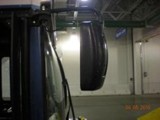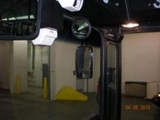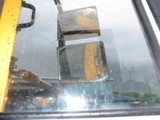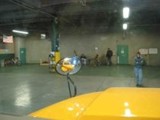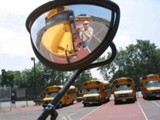(Click on Images to Enlarge)
The importance of proper mirror usage is often unappreciated in a broad spectrum of incident scenarios, particularly as the industry standards for a professional driver — scan the entire accoutrement of mirrors every five to eight seconds — is unthinkable to a common motorist.
Different types of vehicles have different types of mirrors for different reasons. School bus mirrors are irrefutably the best — and it is a shame that they are not adopted for use on other modes, although one occasionally finds an exception. Generally, every vehicle contains a “flat” exterior mirror on each side (to view several hundred feet behind the vehicle other than directly behind it — for which “Rearscopes” (a type of periscope integrated into the rear window) exist, a convex exterior mirror producing an exaggerated albeit distorted view of the area around the “danger zone” (surrounding the rear tires), and with school buses, convex “cross-over” mirrors, which enable the driver to see objects directly in front of and against the front plane of the bus, below the windshield.
Whenever a driver “pulls out,” he or she must perform a routine known as “clearing the mirrors.” This process involves the driver scanning every mirror, in both directions, moments before fixating on the street-side exterior rear-view mirror in order to observe traffic approaching from the rear, before the vehicle pulls out. A range of accident scenarios — wheel crushes, passengers falling down the steps or stepwell, passengers chasing the bus down the street to “catch it,” pedestrians too close to the bus and vulnerable to falling beneath the rear tires (particularly when high banks of snow are plowed against the curb) — can be avoided when the driver performs this function properly. Conversely, failing to provide it properly accounts for a considerable range of accident scenarios.
Finally, the interior rear-view mirror must be checked regularly — preferably every time the vehicle stops (since there is little else the driver must be concerned with when the vehicle is not moving). This practice ensures that passengers remain in their seats or holding on to a stanchion or grab handling, that passengers are not riding in the stepwell, that wheelchairs are not moving around (the ADA limits their movement, when secured, to only two inches in any direction), and that on modes requiring the installation of seatbelts (including every vehicle of any type weighing less than 10,000 lbs. GVWR), that every passenger remains seat-belted — although this scenario is merely an industry standard, while a formal regulatory requirement only for school buses in the State of New Jersey.
